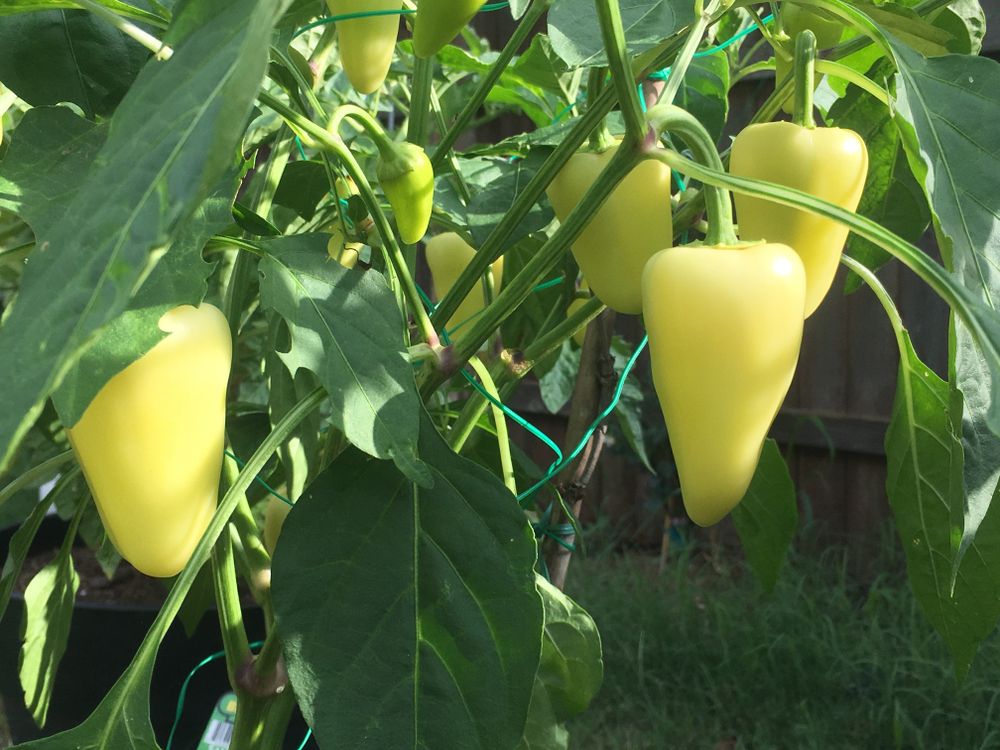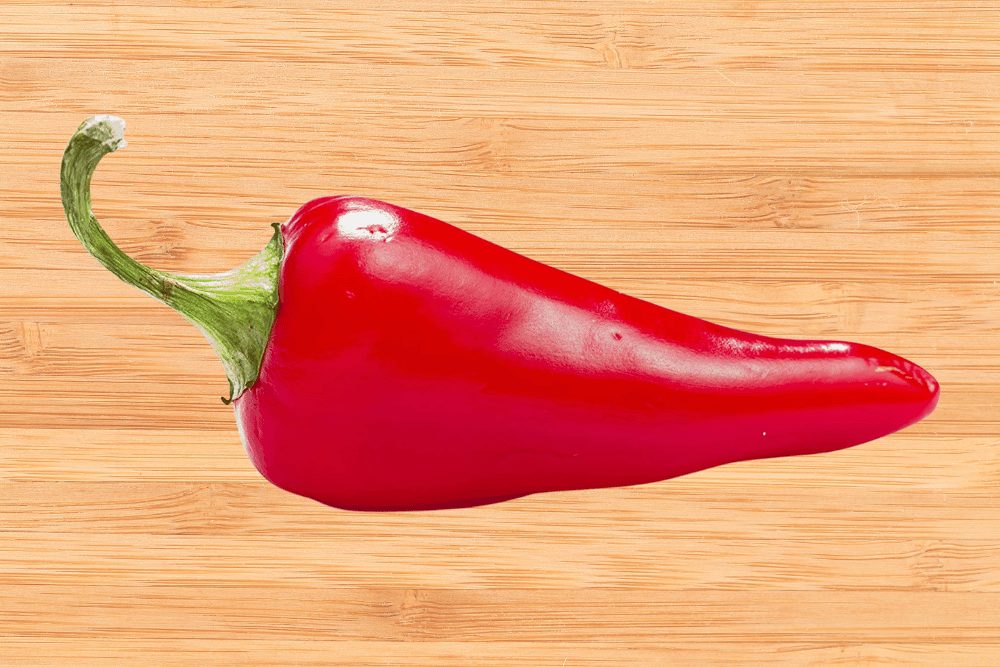Mariachi peppers originate from the US and are preferred for their family-friendly heat, sweet flavor, early ripening, high yields, large fruit size, and beauty. They are a 2006 AAS winner for their superior gardening performance.
What Are Mariachi Peppers?
Named after Mexican music famous in Mexico in the mid-1800s, the mariachi pepper is a recently created Capsicum annuum cultivar developed in the US in the early 2000s.
Mariachi peppers became a 2006 All-America Selections winner for their beauty, high yield, early ripening, delicate flavor, and commendable fruit size.
The All-America Selections (AAS) tests and awards recently created plant varieties for their superior garden performance, recommending them to gardeners.
Are Mariachi Peppers Hybrid?
Yes. Mariachi peppers are a hybrid of Santa Fe Grande peppers—the mild yellow heirloom peppers mainly grown in the American Southwest for kitchen and ornamental purposes.
Color
Mariachi peppers are like other pepper varieties in that they start green. The green color changes to creamy white (pale yellow-white), rose (light yellowish-pink), and bright red at full maturity.
Although they aren’t grown as ornamental peppers like their parent pepper, Santa Fe Grande, or others like black cobra and black pearl peppers, you can still grow mariachi pepper plants for their beauty.
The plants produce plenty of fruits and display different colors as the pods transition as they mature.

Size
Mariachi pepper plants produce large pendant pods that hang down from the stems and reach four inches long and two inches wide when fully mature.
The size of the peppers is similar to Santa Fe Grande peppers, which reach 1.5 inches wide and 3-5 inches long when fully grown.
Shape
Mariachi peppers resemble Santa Fe Grande peppers in shape. They are conical or cone-shaped peppers that taper to a rounded tip on the end away from the stem.
Texture
Like other sweet pepper varieties, mariachi peppers have smooth, glossy, taut, and firm skin covering thick aqueous flesh. The striated flesh is multi-colored, depending on the pepper’s maturity.
Flavor
Mariachi peppers have a sweet, fruity flavor with melon undertones. Their sweetness and fruitiness are less profound than other sweet peppers, but they’re still a delicious addition to any dish where sweet peppers are called for.
You can harvest mariachi peppers at any of the ripened color stages, but the melon-like flavor kicks in best when you harvest them in the creamy white stage. The mature red ones are the sweetest.
Are Mariachi Peppers Hot?
500-600 Scoville Heat Units on the Scoville Scale make mariachi peppers a mildly hot pepper.
They can get as hot as 1,500-2,000 Scoville units when grown under stress in dry soil and hot weather.
The non-lingering mild heat of mariachi peppers is quite family- and guest-friendly.
How To Use Mariachi Peppers In Cooking
The thick walls of mariachi pepper chili peppers make them versatile in the kitchen. Use the peppers in the following culinary applications:
- Pickle to preserve for later use as a snack.
- Eat raw or fresh when diced or chopped into salads and salsas.
- Cook by grilling, roasting, baking, frying, or sautéing.
- As a milder alternative to jalapeno peppers in jalapeno popper recipes.
- As a hotter alternative to bell peppers.
- Stuff with rice, ground meat, or cheese.
Where To Buy Mariachi Peppers
Most stores do not carry mariachi peppers. You’ll have more success finding them at local farmers’ markets in South, North, and Central America.
You can also buy raw or fresh mariachi peppers from local pepper farms and home growers.
Can You Grow Mariachi Peppers?
Mariachi peppers are easy to grow. Like Santa Fe Grande hot peppers, they are resistant to tobamovirus (TMV). They are high-yielding peppers that bear fruits that ripen in 65-68 days, much earlier than other peppers.
You can buy mariachi pepper seeds online from Amazon and seed catalogs. Local gardening centers may also have the seeds.
The one problem you’ll have is that you can’t save the seeds to plant later as you can with heirloom, open-pollinated pepper varieties. Like other hybrids, saved seeds produce weaker plants that bear fewer fruits than their parents.
Pre-culture the pepper seeds indoors 8-10 weeks before the last frost. Germination will happen in 10-20 days. Once the seedlings produce a few sets of true leaves, transplant them into your vegetable garden or containers.
Transplant your young mariachi pepper plants outdoors in full sun and slightly acidic soil. Use an 18-24 inches spacing between the plants to allow enough room for prolific production.
Mariachi chile peppers are also tolerant to urban pollution, so you can easily grow them in your urban home where local laws allow.
Substitutes For Mariachi Peppers
Santa Fe Grande hot peppers (500-700 SHUs), jalapenos, and bell peppers make excellent substitutes for mariachi peppers.
Other sweet hot peppers with zero and mild heat that you can alternate mariachi peppers with include Carmen, California Wonder, banana, and gypsy peppers.

